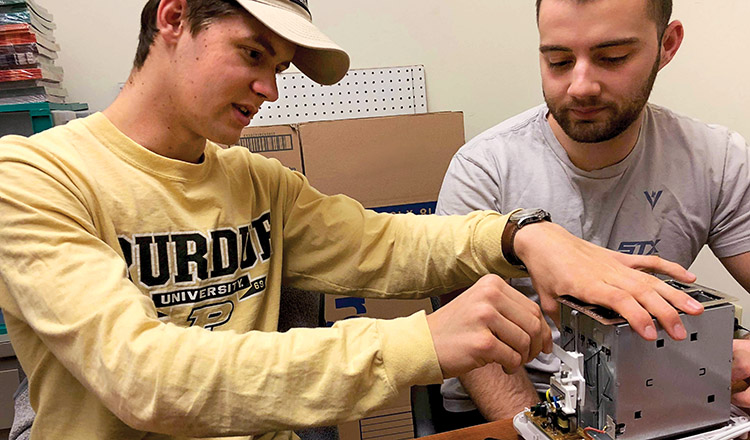Students grab their screwdrivers to dismantle everyday objects
Read a textbook, listen to lectures, master the theories — all keys to learning. Sometimes, though, you need hands-on exploration. Students in any major are invited to bring their curiosity to How Stuff Works, ME297.
There, they’ll meet teaching assistants like Shankar Srinivasan (ME’18), who took his first up-close look at how something works at age 5. “I found a screwdriver, and I took apart my mom’s mixer,” he says. Did he put it back together? “Not a chance. Mom was not very happy, but it started my engineering career.”
Taught by undergraduate members of the Purdue Mechanical Engineering Ambassadors, the one-credit, weekly mechanical engineering class meets for two-hour sessions. Students grab a partner and screwdrivers, then disassemble, study the workings, and reassemble household products — a toaster, pump, doorbell, and hair dryer among them.
“Students love this class,” Srinivasan says. “They enjoy taking things apart.” If they get stuck putting it back together, the instructors are there to help.
“The goal is to understand the principles behind the object, to break down the physics, math, and science behind it,” he says. “It’s 100 percent tangible learning — to understand how an object works and even ask how I might improve the design.”
Take a power drill. “Students may think you push a button that causes the motor to spin and the motor drives the screw. In reality, a lot more intricacies are behind it — gear ratios, torque differentials — that go into how much you are drilling into the object,” he says.
Meeting for 20 sessions, the class also includes a couple of industry speakers who might demonstrate how an object works and tours of Purdue’s nuclear reactor, particle accelerator, and Whirlpool ReNEWW House, which showcases sustainable living.
For a final project, students pick a device that interests them, get busy with their screwdrivers and poking around the inside, then present how it works to the class.
“They come in and teach us,” Srinivasan says, “That’s often where they learn the most.”

